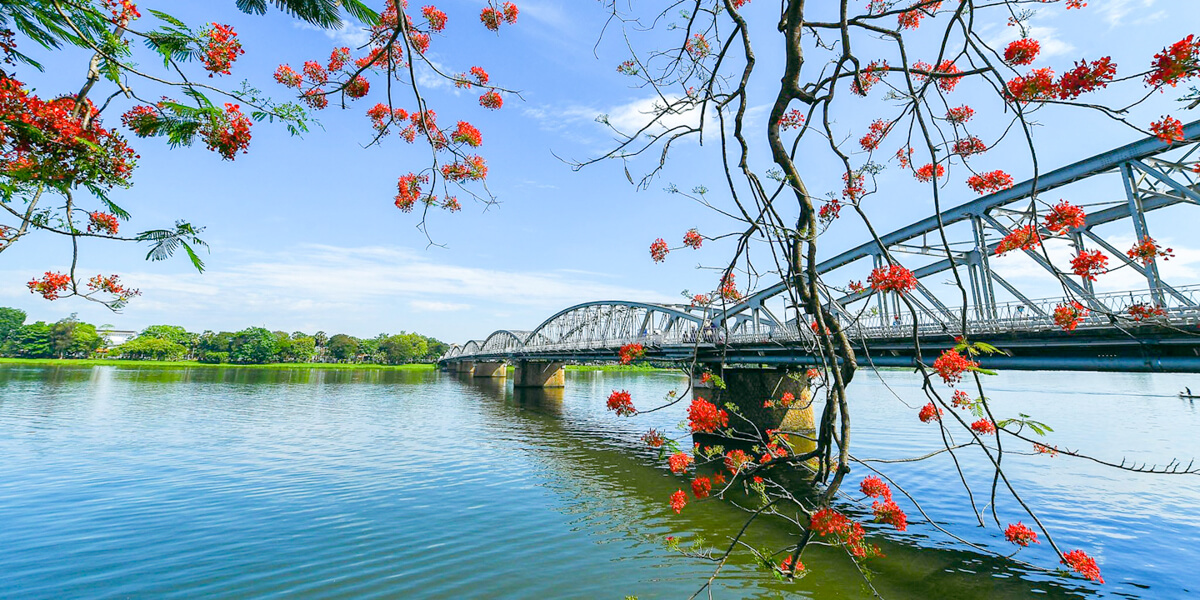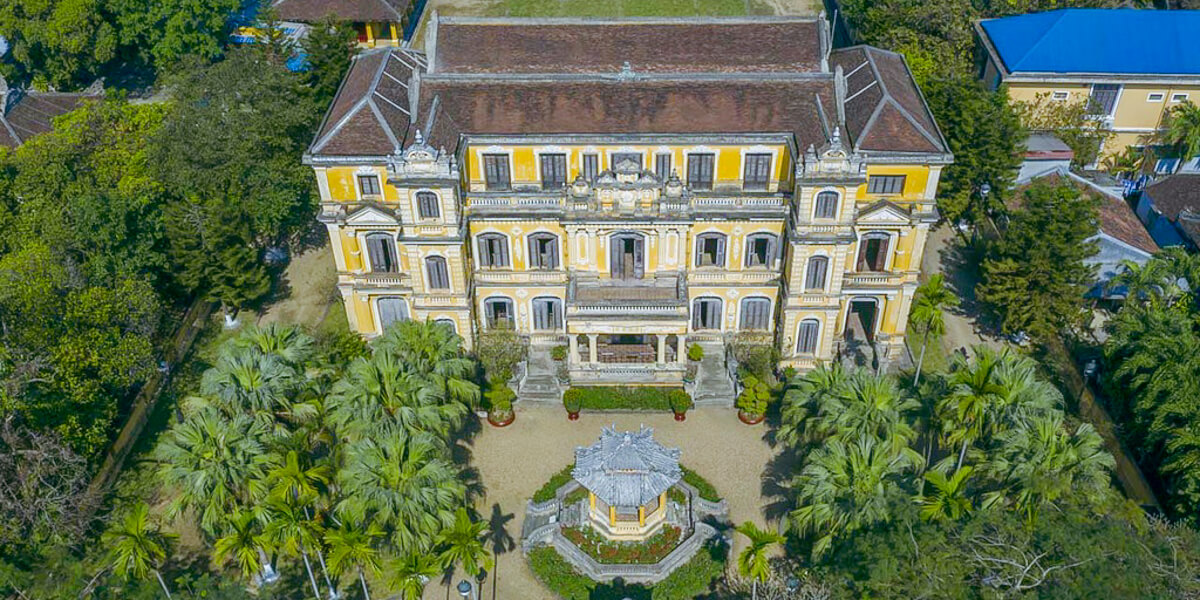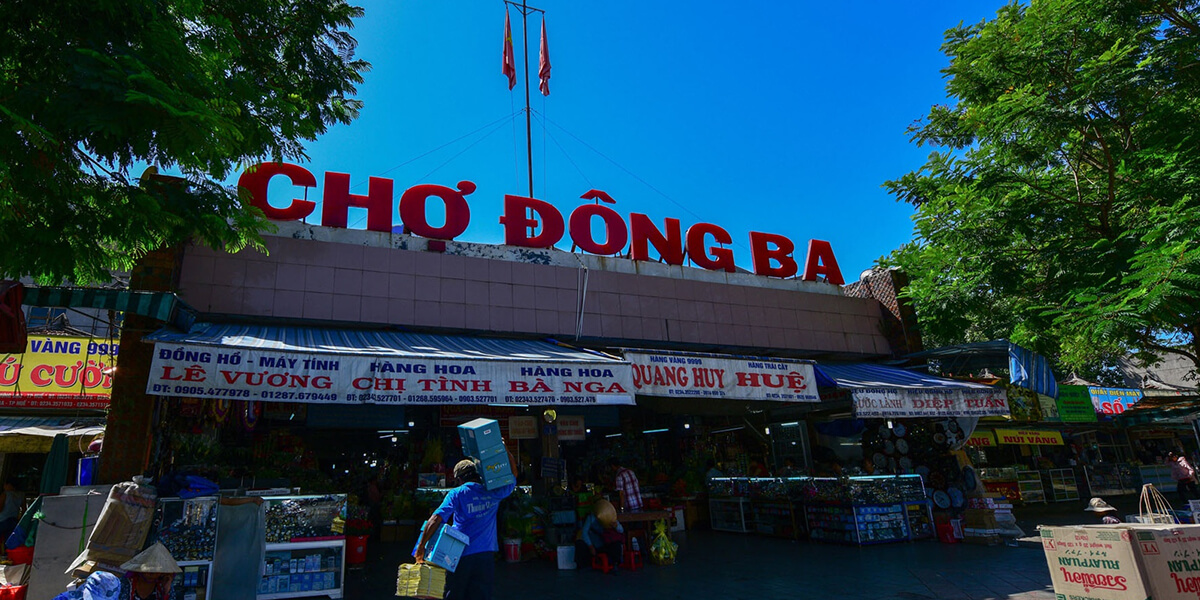In Hue city, there are hundreds kinds of dishes vary greatly from Hue street food, vegetarian food, traditional dishes to royal cuisine dishes. Each of them has its own characteristics and distinctions, but all share the same point of perfection.
I - What made Hue Cuisine
It is no coincidence that Hue people can build such amazing cuisine that has come over hundreds of years of creation, development, and preservation. It is clear to see that during the very first day of this hundred-year-old process, there would be several factors influencing Hue cuisine. In the next part, we will show you the most prominent elements form all types of dishes and cooking styles within Hue:
1 - History factor
Coming back to many years ago, Hue used to be the place where the Champa people lived. Afterwards, Lord Nguyen, during his reign, choosed Hue as Vietnam’s capital. These historical elements promoted and formed the typical Hue’s dishes of which the most noticeable is Hue imperial cuisine.
2 - Climate factor
The humid tropical climate which experiences the two typical rainy and dry seasons associated with the aridity of the soil are the appropriate conditions producing diverse sources of ingredients. From that, the deliciousness of the main ingredients is the basic base to create unforgettable dishes.

Source: Vietnamairlines
3 - Local people role in Hue cuisine
The intensive and extensive influence of Confucianism especially ideology of “The Three Obediences and the Four Cardinal Virtues” which formed the standard requirements for evaluating traditional women in the past. One of the most important criteria stated is the professional cooking skill. During many years, this ideology was deeply ingrained into the subconscious of each local person, especially Hue women. Accordingly, every woman is constantly trying to learn and improve herself to reach the standard of this evaluation. Therefore, visitors can easily notice that when cooking, Hue people nearly put their whole mind and heart into every step.
4 - Culture
Being influenced by the culture of wet rice civilization, Hue has many made-of-rice dishes such as beef vermicelli, noodle, banh xeo, sticky rice, and so on. Additionally, local beliefs and concepts of life also play an important role in contributing to the development as well as maintenance of the cuisine in this destination. That may be the reason why during more than 600 years, Hue dishes have been divided into four seasons (spring - summer - autumn - winter)
In short, each of the mentioned factors, one by one create a distinct and special feature for the attraction of Hue cuisine. Despite much or less, they all contribute to the unique dishes of this land. Therefore, each dish has its own story and its own distinct humanistic meaning.
II - Hue culinary classification
Hue is well known over Vietnam with its typical royal cuisine. However, the traditional food associated with vegetarian dishes of Hue are also wonderful.

1 - Ancient Hue Royal cuisine
The noticeable characteristics of royal cuisine include fresh ingredients, complicated cooking style, meticulous and elegant decoration as well as unique names. Because in the past, they are all royal dishes served within imperial parties, each of the dishes not only has beautiful decoration but also has to ensure the most nutritional factors.
There are many typical dishes having the distinction of imperial cuisine namely fermented peacock roll, longan tea, sticky rice, salangane nests, dancing phoenix, phoenix flying over islands, steamed unicorn shrimp, and so on. (They are just the named according to the decoration and appearance of the dishes)
2 - Traditional Hue cuisine
Unsimilar to the royal cuisine, although the traditional cuisine is not made from the best ingredients they still ensure every standard criteria in both appearance and quality. We can find the diverse ingredients used to cook. The presentation and decoration of the folk cuisine are not so meticulous and complicated; however, it still must be elegant, well-arranged and clean. "Collectivism" is the unique beauty of the folk culinary culture of Hue people in particular and Vietnamese people in general. In particular, in cooking, people in Hue always pay great attention to colors’ combinations to make the food not only beautiful but also delicious.
Some typical dishes of folk cuisine can be mentioned such as banh beo, banh in, cao lau, pho bo, and so on. Each dish is intensively connected to a story as well as a message of love and faith of the local people.

3 - Vegetarian Hue cuisine
Simple ingredients like rice, potatoes, cassavas and vegetables are transformed amazingly to delicious vegetarian foods by the culinary skills of talented Hue people. By a mysterious way, they have colors and flavors as attractive as the normal dishes. It is the sophistication, meticulousness and carefulness in the cooking process that more than 108 vegetarian dishes of Hue are still preserved until present.
Furthermore, up to 75 % of the local people are Buddhists, therefore, vegetarianism is quite important. This is exactly the reason why vegetarian cuisine in Hue has been developed and preserved for many years. Visitors should consider some famous vegetarian dishes like boiled meat, chicken, banh tet, banh chung, vegetarian vermicelli and vegetarian pho.
III - Art in Hue cuisine
In Vietnam, Hue is the only city that owns the list of one hundred dishes described by poems and also owns the group named “Domestic Science Academy” which specializes in teaching household skills for women. Dishes of Hue mostly derive from the folk cuisine which have gradually been selected, changed, promoted during the long time. Therefore, people often said that Hue asian cuisine is amazing art and the chef is an artist. To make this art perfect, there are 5 elements that we cannot miss.

1 - Choosing ingredients
Hue people not only focus on the decoration step but also pay attention to the phrase of collecting ingredients. They often base on some following ways to have the best ingredients.
- According to seasons:
People often choose the ingredients for Hue cuisine that are grown in their right season, in the most favorable weather conditions. This way ensures that each selected ingredient is extremely fresh as well as contains high nutrition. As an illustration, in spring, the seasonal ingredients often include water spinach, cabbages, Thien Ly flowers, shrimps, eels, mackerels, mackerels.
- According to price:
Depending on the family's income, Hue women will choose the suitable ingredients. Accordingly, if their income is high, they will use expensive ingredients such as bird's nest, fish, meat, tiger shrimp, and seafood. If the income is a little lower, they will buy small shrimp, vegetables and so on.
- According to special criteria:
At different ranges of age, people will have different criteria in nutrition and absorption abilities. Therefore, it is very important to classify the food depending on. Moreover, for vegetarians, when choosing ingredients, they always avoid some food such as meat, beef and seafood.

2 - Food preliminary preparation and marinating
If the careful selection of ingredients ensures the freshness of the dish, the preliminary processing and marinating create an unique flavor for Hue cuisine.
- Preliminary processing: The profestional technique of using knives at the same time promote the beautiful appearance, keep the pristine color and increase the original taste of the ingredients
- Marinating: The use of diverse marinade, flavor and spice play an essential role in removing the unwanted taste of the raw ingredients like the fishy smell and balance the properties of the dishes. Thus, it helps ensure that the spices are infused without losing the original flavor.
3 - Food processing
Of all steps, not only the preliminary process, decoration, but the Hue food processing is very important. The processing step always focuses on preserving the pristine flavor of ingredients associated with enhancing the dish’s value with presentation or decoration. Therefore, the same dish, the same recipe, but each style of cook processing will create a different taste.

4 - Food decoration
The Hue food’s decoration style is quite meticulous and sophisticated; however they still try to maintain the natural beauty and color of food as well as avoid all types of food color. It is undeniable that the professional knife skill and the special style of arranging and decoration of Hue people are unique. In addition, to increase the flavor as well as the color of dishes, Hue women often use many kinds of vegetables carved to decorate different details. These details are always selected, combined according to the principle which aims to highlight the main part of the Hue asian cuisine.
5 - Food enjoying
In the past, the process of enjoying a dish of Hue people also has a certain set of rules, which is influenced by the Confucian ideology especially the conception of “The Three Obediences and the Four Cardinal Virtues”. However, nowadays, lots of the old rules were not widely applied anymore:
The main dishes within a meal have to be arranged at the center of the table and the other ones are set at surrounding positions.
Old people and kids sit near the tray of dishes and the further positions accordingly belong to the people having the lower status .
Women usually sit near the rice cooker to serve food to family members.
Within Tet holidays’ meals, anniversaries and holidays’ parties, the trays of dishes are arranged depending on the family members’ hierarchy.
During the eating time, people should keep quiet.
Do not try to lean over to pick up food and pick up food continuously for guests.
The owner/host has to wait for the guests to finish the meal, and does not finish the meal before the guests.
>> Visiting local markets in Hue for a street food tours is absolutely great!
IV - Hue culinary artisans

To bring Hue cuisine to the world, people cannot deny the important role of Hue culinary artisans:
- Culinary artisan Nguyen Thi Phien, who attended Women's High School, owns the special methods of special food processing such as phoenix rolls. The traditional and typical dishes of Hue have been preserved and propagated by the artisan via many kinds of activities.
- Culinary artisan Ho Thi Hoang Anh: Although she didn’t attend any schools, she has her own way to achieve success in the professional cuisine field. During the years from 2002 to 2015, she was repeatedly invited to important parties, events in many countries as well as around the world.
- Culinary artisan Mai Thi Tra is an Imperial family member and decade-year-old experience in the cuisine field and evangelization. In 2018, she had the honor to become an honorary member of The VietNam Cuisine Culture Association (VCCA).
is the combination of ancient, elegant, imperial and simple features which not only provides delicious tastes but also preserves the beauty of Hue culture, history and custom. Therefore, Hue as well as cuisine always brings amazing and unforgettable experiences to visitors.
Along with Hanoi, Hue cuisine is another important centre of food which creates a rich & diverse Vietnamese cuisine at which tourists can fill your stomach with hundreds of delicious dishes.







 — Quan Nguyen
— Quan Nguyen




































